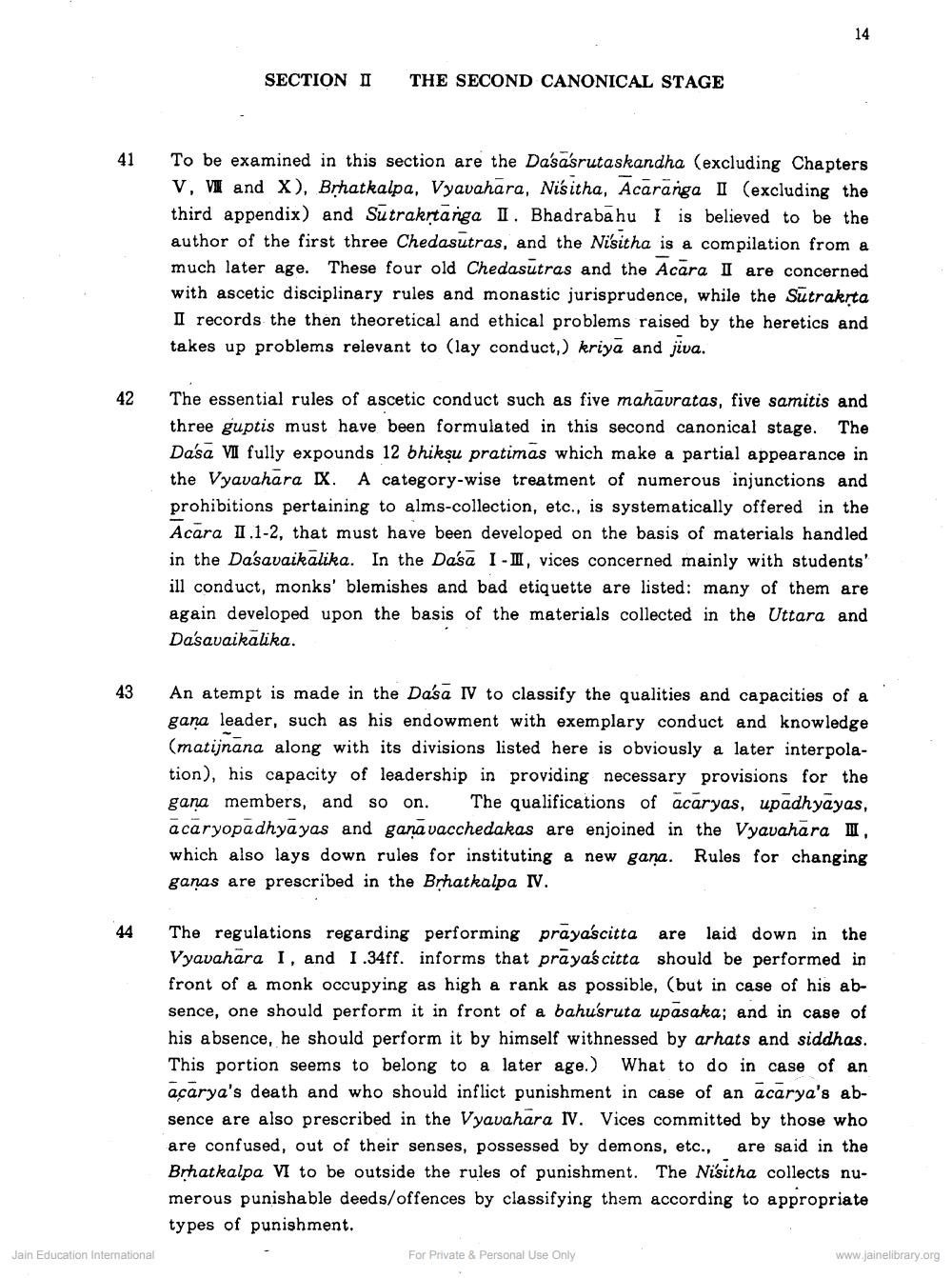________________
SECTION II
THE SECOND CANONICAL STAGE
41
To be examined in this section are the Da'sa'srutaskandha (excluding Chapters V, VI and X), Brhatkalpa, Vyavahara, Nisitha, Acaranga II (excluding the third appendix) and Sutrakrtanga I. Bhadraba hu I is believed to be the author of the first three Chedasutras, and the Ni'sitha is a compilation from a much later age. These four old Chedasutras and the Acara I are concerned with ascetic disciplinary rules and monastic jurisprudence, while the Sutrakrta I records the then theoretical and ethical problems raised by the heretics and takes up problems relevant to (lay conduct,) kriya and jiva.
The essential rules of ascetic conduct such as five mahavratas, five samitis and three guptis must have been formulated in this second canonical stage. The Dasa VI fully expounds 12 bhikṣu pratimas which make a partial appearance in the Vyavahara IX. A category-wise treatment of numerous injunctions and prohibitions pertaining to alms-collection, etc., is systematically offered in the Acara 1.1-2, that must have been developed on the basis of materials handled in the Da'savaikalika. In the Dasa I-I, vices concerned mainly with students' ill conduct, monks' blemishes and bad etiquette are listed: many of them are again developed upon the basis of the materials collected in the Uttara and Da'savaikalika.
An atempt is made in the Dasa I to classify the qualities and capacities of a gana leader, such as his endowment with exemplary conduct and knowledge (matijnana along with its divisions listed here is obviously a later interpolation), his capacity of leadership in providing necessary provisions for the gana members, and so on. The qualifications of acaryas, upadhyayas, acaryopadhyayas and ganā vacchedakas are enjoined in the Vyavahara I, which also lays down rules for instituting a new gana. Rules for changing ganas are prescribed in the Brhatkalpa IV.
The regulations regarding performing prayascitta are laid down in the Vyavahāra I, and 1.34ff. informs that prāyas citta should be performed in front of a monk occupying as high a rank as possible, (but in case of his absence, one should perform it in front of a bahu'sruta upasaka; and in case of his absence, he should perform it by himself withnessed by arhats and siddhas. This portion seems to belong to a later age.) What to do in case of an acarya's death and who should inflict punishment in case of an acarya's absence are also prescribed in the Vyavahara IV. Vices committed by those who are confused, out of their senses, possessed by demons, etc., are said in the Brhatkalpa VI to be outside the rules of punishment. The Nisitha collects numerous punishable deeds/offences by classifying them according to appropriate types of punishment.
For Private & Personal Use Only
Jain Education International
www.jainelibrary.org




